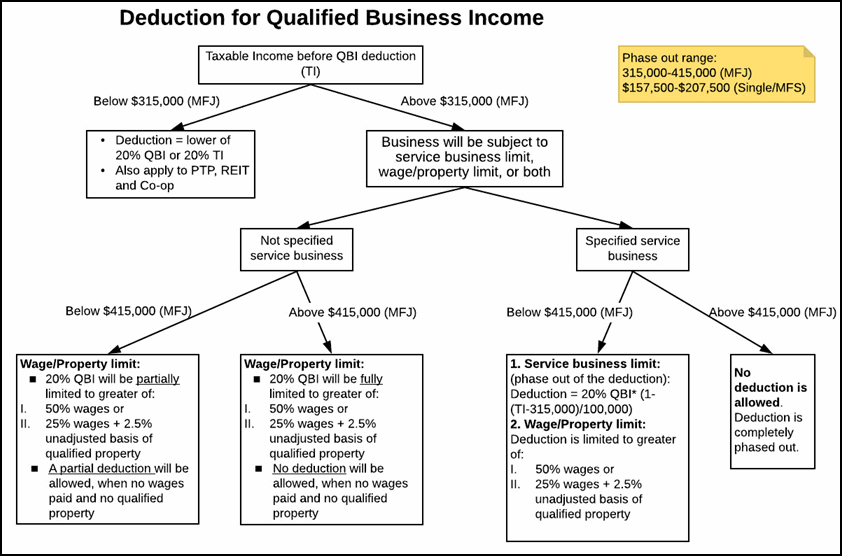Scenario 1
Not a specified service business, above taxable income threshold, but below the maximum phase-out range (between $157,500-$207,500, or $315,000-$415,000 if MFJ).
For this scenario, the wage/property limits start to phase in. The computed 20% deduction amount will be partially limited to the higher of 50% of wages paid by the business, or 25% of the wages paid plus 2.5% of the unadjusted basis of qualified property. If the business has no wages paid, and no qualified property, a partial deduction will be allowed.
Scenario 2
Not a specified service business, above taxable income threshold, and also above the maximum phase-out range (above $207,500, or $415,000 if married filing jointly).
For this scenario, the wage/property limits are fully phased-in. The computed 20% deduction amount will be limited to the higher of 50% of wages paid by the business, or 25% of the wages paid plus 2.5% of the unadjusted basis of qualified property. If the business has no wages paid, and no qualified property, then no deduction is allowed at all.
Scenario 3
Specified service business, above taxable income threshold, but below the maximum phase-out range (between $157,500-$207,500, or $315,000-$415,000 if married filing jointly).
This is the most complex scenario. This business will be subject to both the phase-out of the deduction (due to being a specified service business), and a phase-in of the wage/property limits.
Scenario 4
Specified service business, above taxable income threshold, and also above the maximum phase-out range (above $207,500, or $415,000 if married filing jointly).
For this specified service business scenario, the deduction is completely phased out, and there is no deduction allowed.

